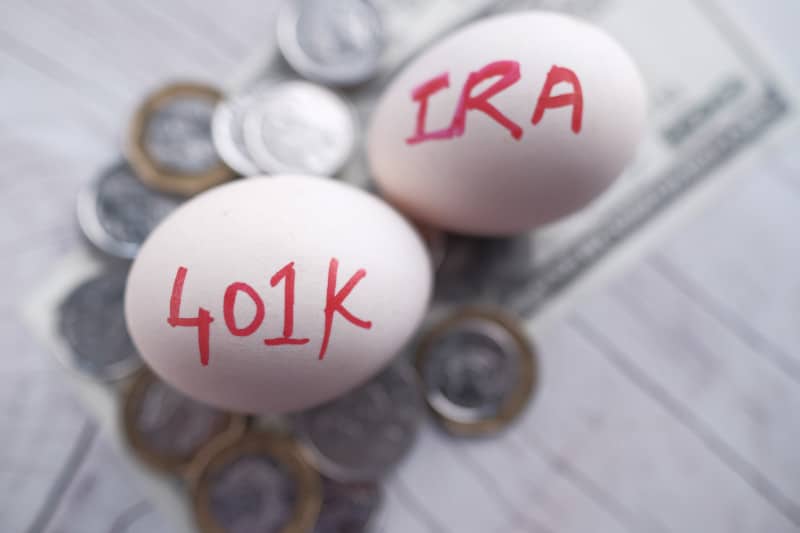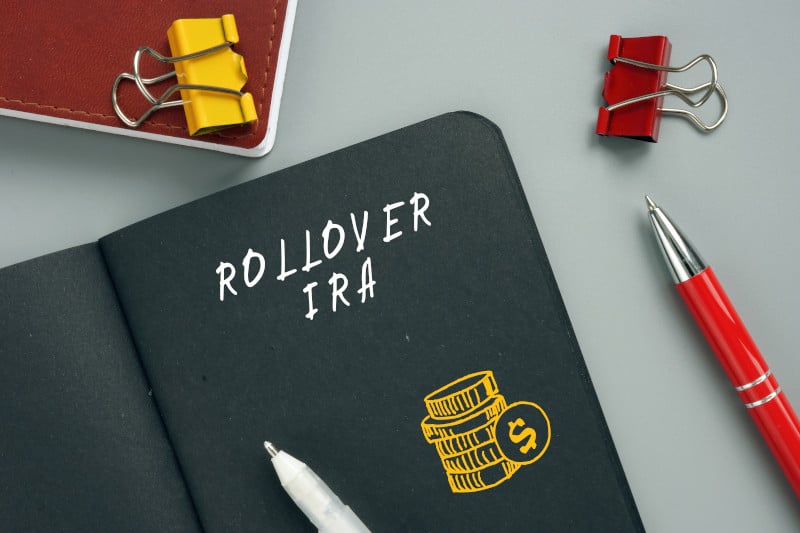3 Easy Steps to Roll Over Your TSP Into an IRA
Over 70 million Americans today have 401(k) accounts, making them one of the most popular types of retirement accounts Federal employees don’t have 401(k) accounts, but instead have the Thrift...
Precious Metals

Many Americans today are looking for ways to help safeguard their finances. Increasing market volatility and uncertainty surrounding tariffs could end up weighing on the US economy and it’s making many people nervous about the future.
No one wants to see a repeat of the 2008 financial crisis, but that’s a fear in the back of many people’s heads. With the situation seemingly changing daily, there’s no telling where markets could be a month from now, let alone a year from now.
With growing fear and uncertainty, more Americans are looking at alternative assets to help preserve their wealth themselves, including precious metals like gold. And for those looking to help safeguard tax-advantaged retirement assets, a gold IRA is becoming an increasingly popular way to do so.
But just how much money can you place in a gold IRA? Read on to learn more about gold IRA contribution limits.
Most people today are probably familiar with a 401(k), as that is the dominant form of employer-sponsored retirement savings account. But not everyone may be familiar with an IRA.
An IRA (individual retirement account) is a tax-advantaged retirement savings account whose development actually predates the 401(k). There are numerous types of IRA accounts, each with its own unique properties.
These accounts were created to enable US workers to help accrue retirement savings in addition to or instead of company pensions, which have slowly disappeared at most private firms.
IRA accounts are managed by custodians, which could be a bank, a brokerage, or a custodian who specializes in alternative assets such as precious metals.
The two primary types of IRA accounts today are a Traditional IRA, which uses pre-tax dollars to acquire assets and which requires payment of taxes when you take a distribution, and a Roth IRA, which uses post-tax dollars to acquire assets and in which you pay no taxes when you take a qualified distribution.

A gold IRA is just an IRA account that owns physical gold coins or gold bars. Most IRA accounts hold conventional financial instruments such as stocks, bonds, or shares in various funds.
Relatively few IRA custodians are in the business of managing physical precious metals assets, which means that finding a custodian to start a gold IRA can be a little tricky if you don’t know what you’re doing. Goldco works with established gold IRA custodians to ensure that our customers are able to start gold IRAs without having to do extensive searches on their own.
Like any other IRA, a gold IRA can be either a Traditional IRA or a Roth IRA. This allows you the option to use either pre-tax or post-tax dollars to buy gold coins or bars and hold them in your gold IRA.
There are numerous benefits to owning gold. Here are four to keep in mind.
One important role gold can play is portfolio diversification. Keeping all of your holdings concentrated in one asset class or one geographic region can concentrate your risk.
That’s why many people choose to diversify their portfolios, so that potential losses in one area of their assets might be able to be mitigated by holdings in another area.
Gold is considered a countercyclical asset, one with low correlation to financial assets like stocks and bonds, which can make it a popular choice for portfolio diversification.
Gold has been a safe haven asset for hundreds of years. Even today people flock to gold as a safe haven asset when economic turmoil and financial uncertainty rear their heads.
Gold isn’t just a safe haven for individuals either. Central banks today are some of the biggest buyers of gold, buying gold at record rates. They understand that when the economy weakens and currencies become devalued, gold can act as an important backstop.
Many people trust gold to act as a hedge against inflation. Over the years gold has maintained its purchasing power even though the dollar has become significantly devalued.
Since 1971 gold the US dollar has lost 88% of its value. But in that same period the price of gold has increased almost 9,500%.
During the 1970s, gold’s annualized rate of growth was over 30% per year over the course of the decade, far outpacing inflation. If we were to experience a resurgence of inflation today, many people hope that gold might repeat that type of performance over the next decade.
Finally, gold is an incredibly liquid asset. Gold markets operate around the world 24/7, and there are numerous sources from which you can buy gold and to which you can sell gold.
Gold can be sold almost anywhere, and many people may turn to selling gold as a way to drum up some quick cash. If you’re in need of money quickly, selling gold could be one way of getting the funds you need.

While 401(k) plans dominate when it comes to employer-sponsored retirement plans, Americans actually hold more money in IRA plans. As of the end of 2024, Americans held $17 trillion in IRA plans, versus $8.9 trillion in 401(k) plans.
Seeing that, you might think that’s because people can put more money into an IRA than into a 401(k). But the answer is no, and yes. How is that?
The annual contribution limit for IRA accounts in 2025 is $7,000, or $8,000 if you’re above age 50 because you’re allowed a $1,000 catch-up contribution. This is across all your IRA accounts, so if you have multiple IRA accounts, you can only contribute $7,000 combined to all those accounts.
For a 401(k) account, the annual individual contribution limit in 2025 is $23,500, or $31,000 if you’re over age 50 and take advantage of the $7.500 catch-up contribution. And the combined maximum individual plus employer contribution is $70,000, or $77,500 if you include the catch-up contribution.
In that sense, no, you can’t contribute more money to an IRA than to a 401(k). So how do people have so much money in IRA accounts if the annual contribution limit for 401(k) accounts is so much higher?
That’s because IRA accounts can be funded through other means than just individual contributions. One of those is a rollover from a 401(k) account.
Once you have an IRA account established, you can roll over funds from a 401(k) or similar account into that IRA. Or if you have multiple IRA accounts, you can transfer funds among those accounts.
These rollovers and transfers are of course governed by certain regulations and limits placed upon them by IRS. But rollovers aren’t subject to the annual IRA contribution limits.
A 401(k) to IRA rollover allows you to use the existing retirement funds you’ve been accumulating at your employer and put them to use in an IRA account. Why might you want to do this?
For one thing, you might have an orphaned 401(k) at a previous employer that has just been sitting around doing nothing. Moving that money to an IRA could give you more asset options.
Other people might not like the limited options with their current 401(k) account and are looking for more or better options. And others may still feel limited by being able to buy only financial assets, and might want to buy alternative assets such as real estate, precious metals, or commodities.
Unlike annual contribution limits, there are no limits to how much money you can roll over from a 401(k) into an IRA. You could transfer $100,000, $500,000, or even $1 million or more. So in that sense, yes, you can put more money into an IRA than into a 401(k).
The only limits on rollovers and transfers are with respect to frequency, as these accounts are retirement accounts intended for long-term saving for retirement, not brokerage accounts. If you’re looking into rolling over or transferring your retirement assets, you’ll want to familiarize yourself with the IRS rules and regulations governing them and/or consult with your financial advisor.
The other thing to be aware of is that your 401(k) account has to allow outbound transfers in order to perform a rollover. Some 401(k) accounts may not allow in-service withdrawals, meaning that you have to keep your funds in that 401(k) as long as you remain with your current employer.
In that case, your money has to stay in your 401(k) account until you leave your employer, or until your employer switches to another 401(k) plan that allows in-service withdrawals.

If you’ve decided that you want to roll over funds from your 401(k) into an IRA, the process is relatively simple.
Goldco has helped thousands of customers over the years benefit from owning gold, and many of them have chosen to buy gold with a gold IRA. Our IRA specialists are ready to help you navigate the rollover process and get started with your gold IRA rollover.
If you are worried about gold IRA contribution limits being a barrier, the fact that you can roll over as much as you want into a gold IRA should be comforting.
For those who don’t want to roll over retirement assets, Goldco also offers direct cash purchases of gold coins and gold bars. No matter how you want to buy your gold, Goldco has options available for you.
With over $3 billion in precious metals placements and thousands of satisfied customers, Goldco has worked hard to become one of the most trusted gold companies in the country. Call Goldco today to learn more about how you can help safeguard your hard-earned savings with a gold IRA.
This article was originally published in May 2023 and was updated in May 2025.

